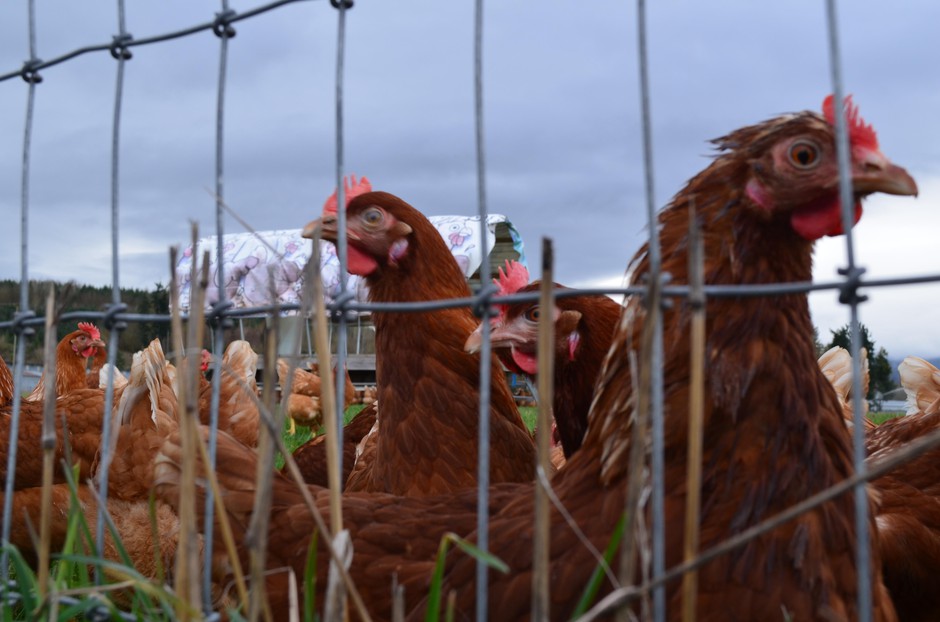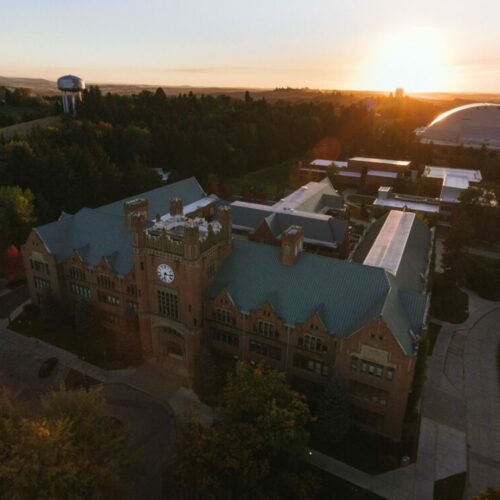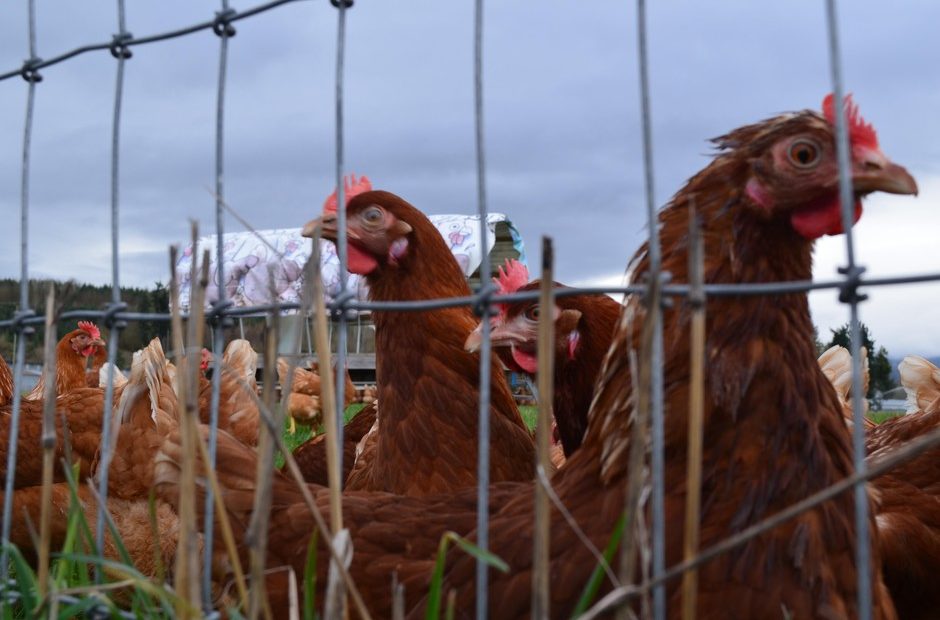
This Is What That ‘Salmon-Safe’ Label Says About Your Wine Or Eggs
Listen
In a big grass pasture in the shadow of Mount Rainier, hundreds of chickens are crowded around a little house where they can get water and shelter from the bald eagles circling overhead. This is the original location of Wilcox Family Farms, an egg farm that also has locations in Oregon and Montana.
Jim Wilcox says his farm didn’t always look like this, but, over the past 20 years, his customers both at small, upscale grocery stores and at big chains like Costco started asking a lot of questions. They wanted to know if Wilcox farms were good stewards of the land. If they had a good carbon footprint.
And this:
“Since we have so many waterways that we either border or run through our property, are we taking good care of those?” Wilcox recalls.
So the Wilcoxes started responding to those concerns. And they started collecting labels: organic, all-natural, cage-free, non-GMO. All those certifications are supposed to make customers feel good about looking out for their family’s health and protecting the environment.
One of the eco-labels Wilcox Farms acquired in recent years is “salmon-safe,” a label more often seen on craft beer and Northwest wine bottles than egg cartons.
The whole thing started because the Wilcoxes’ 1,500-acre Washington farm borders the Nisqually River, which has runs of steelhead and salmon. And farming can be hard on fish. Think pesticides, irrigation draining creeks, and, Wilcox says, “with all these chickens, as you might imagine, we have tons and tons of fertilizer” — that is, chicken manure.
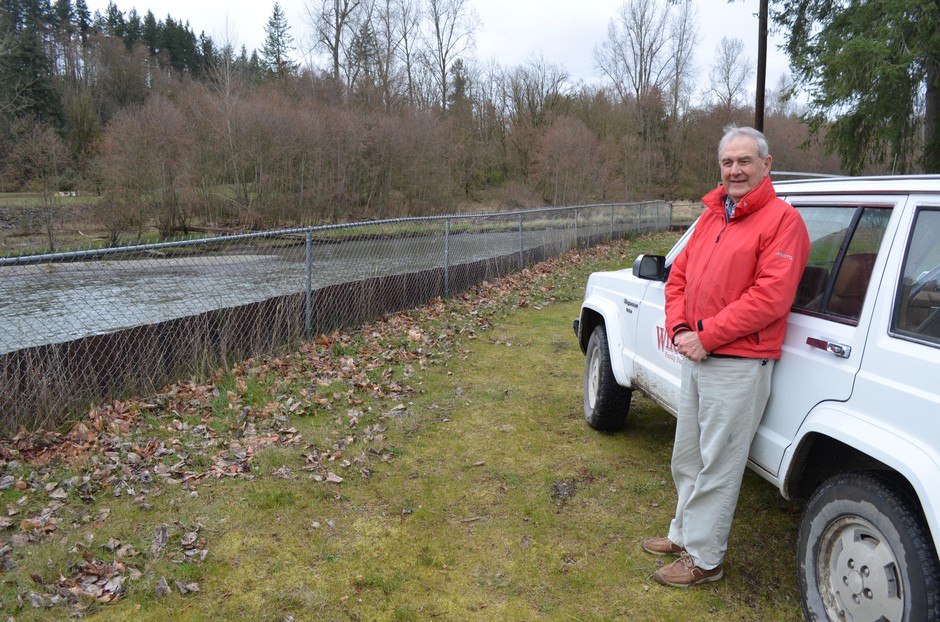
Jim Wilcox is a fourth-generation egg farmer. His family farm borders the Nisqually River. CREDIT: EILIS O’NEILL
The salmon and steelhead in the Nisqually River have been declining for decades, and that’s a huge concern for the Nisqually Tribe.
“When the first fish comes back, you thank that salmon for coming home and sustaining your life,” Billy Frank Jr. said in an interview before his death in 2014. Frank was a member of the Nisqually Tribe and a legendary activist for tribal fishing rights.
“We can’t band-aid this watershed,” he said of the Nisqually River. “We’ve got to think about it for all of us: for everyone to have clean water, quality and quantity of that water, to have salmon, to have them trees, to have all that medicine out there.”
The way Jim Wilcox tells it, Billy Frank Jr. is a big reason he decided to change the way he runs his farm. It was Frank who encouraged Wilcox to stop using pesticides, plant trees by waterways and keep chicken manure out of the water. That would earn him a “salmon-safe” certification for his eggs. Wilcox says he decided “that’s where our future lay.”
The salmon-safe label was created in the late 1990s to try to translate consumer interest in salmon into money for farmers who did right by fish.
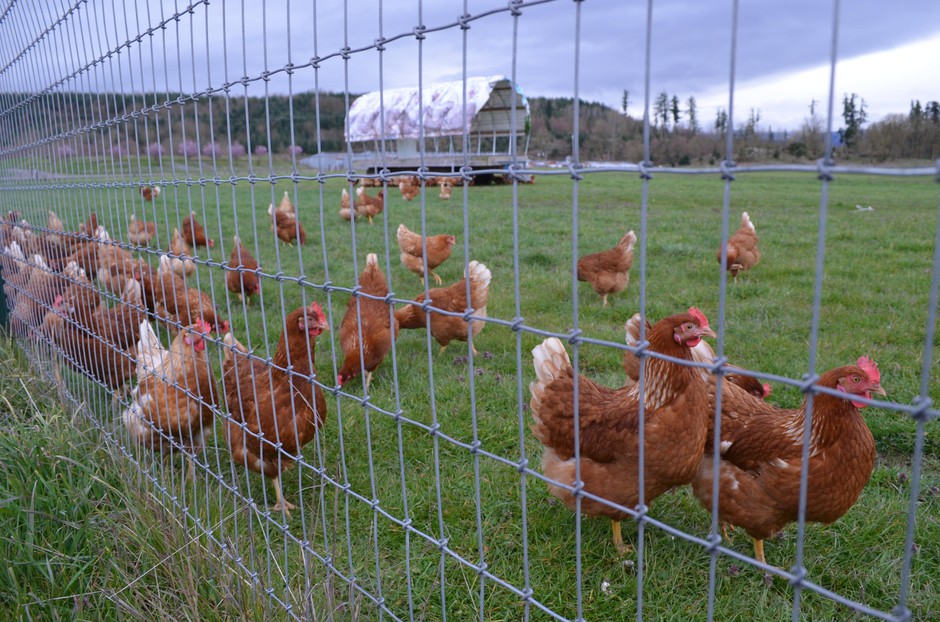
Wilcox Family Farms has changed how it raises chickens in order to protect the Nisqually River and its fish. Those changes have earned the farm a “salmon-safe” label for its eggs. CREDIT: EILIS O’NEILL
“We started out working with vineyards in the Willamette Valley,” Dan Kent, the executive director of Salmon-Safe, recalls. Today, he says, more than 800 farms from Alaska to northern California have the certification, including a full third of Oregon’s vineyards.
But things haven’t worked out exactly as Kent had hoped. Not enough consumers know what salmon-safe means — and that means not enough are willing to pay more for staple food items like eggs that cary the label. But a different class of buyers does know what salmon-safe means, and they’re interested: grocery stores.
“What we’ve learned over the years,” Kent says, “is that the real value we can deliver to certified landowners is market access.”
In other words, given the choice, certain high-end supermarkets lean toward salmon-safe options. Kent says his next goal is to start working with more wheat, apple and dairy farmers to earn the certification and use it to market their products to grocery-store buyers.
Back on the Wilcox Farm, I climb into Jim’s old Jeep. Its windows roll down manually and its clock bears no relationship to the actual time.
“It’s kind of an old beater,” Jim admits. “You know, I take it on the old back roads.”
We bump over a rutted dirt road to the Nisqually River, and Wilcox shows me where he and his sons and nephew are planning to pull out a dike and let the river flood about 15 acres of their land.
“The river’s going to be allowed to just kind of meander in here,” he points out the window, “and hopefully it will just create kind of a still water where little fingerlings and feeder-type fish can thrive.”
Correction: April 26, 2018: An earlier version of this story included an inaccurate description of the status of the Nisqually River’s steelhead population. Nisqually steelhead are not increasing in abundance, and the Washington Department of Fish and Wildlife has not opened a sport fishery for winter steelhead on the Nisqually.
Copyright 2018 Earthfix 2018
Related Stories:

Ocean conditions mixed for salmon, leading to average salmon returns
NOAA biologist Brian Burke says mixed ocean conditions may lead to average salmon runs, but climate change is disrupting ecosystems—making continued research critical.

Canadian leaders hope trade negotiations won’t derail Columbia River Treaty
A view of the Columbia River in British Columbia. The Columbia River Treaty is on “pause” while the Trump administration considers its policy options. However, recent comments by President Donald
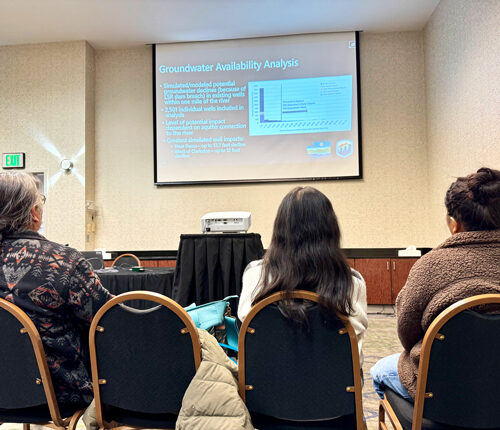
Snake River water, recreation studies look at the river’s future
People listen to an introductory presentation on the water supply study findings at an open house-style meeting in Pasco. After they listened to the presentation, they could look at posters

